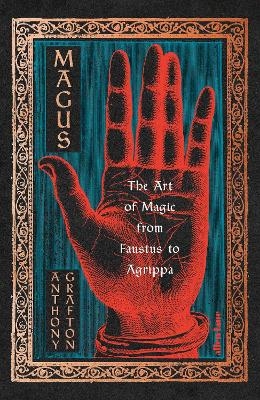
Magus
The Art of Magic from Faustus to Agrippa
Seiten
2024
Allen Lane (Verlag)
978-1-84614-363-2 (ISBN)
Allen Lane (Verlag)
978-1-84614-363-2 (ISBN)
A revelatory new account of the magus - the learned magician - and his place in the world of Renaissance Europe
At the heart of the extraordinary ferment of the High Renaissance stood a distinctive, strange and beguiling figure: the magus. An unstable mix of scientist, bibliophile, engineer, fabulist and fraud, the magus ushered in modern physics and chemistry while also working on everything from secret codes to siege engines to magic tricks.
Anthony Grafton's wonderfully original book discusses the careers of men who somehow managed to be both figures of startling genius and - by some measures - credulous or worse. The historical Faust, Marsilio Ficino, Pico della Mirandola, Johannes Trithemius and Heinrich Cornelius Agrippa are all fascinating characters, closely linked to monarchs, artists and soldiers and sitting at the heart of any definition of why the Renaissance was a time of such restless innovation. The study of the stars, architecture, warfare, even medicine: all of these and more were revolutionized in some way by the experiments and tricks of these extraordinary individuals.
No book does a better job of allowing us to understand the ways that magic, religion and science were once so intertwined and often so hard to tell apart.
At the heart of the extraordinary ferment of the High Renaissance stood a distinctive, strange and beguiling figure: the magus. An unstable mix of scientist, bibliophile, engineer, fabulist and fraud, the magus ushered in modern physics and chemistry while also working on everything from secret codes to siege engines to magic tricks.
Anthony Grafton's wonderfully original book discusses the careers of men who somehow managed to be both figures of startling genius and - by some measures - credulous or worse. The historical Faust, Marsilio Ficino, Pico della Mirandola, Johannes Trithemius and Heinrich Cornelius Agrippa are all fascinating characters, closely linked to monarchs, artists and soldiers and sitting at the heart of any definition of why the Renaissance was a time of such restless innovation. The study of the stars, architecture, warfare, even medicine: all of these and more were revolutionized in some way by the experiments and tricks of these extraordinary individuals.
No book does a better job of allowing us to understand the ways that magic, religion and science were once so intertwined and often so hard to tell apart.
Anthony Grafton is the author of The Footnote, Defenders of the Text, Forgers and Critics, and Inky Fingers, among other books. The Henry Putnam University Professor of History and the Humanities at Princeton University, he writes regularly for the New York Review of Books.
| Erscheinungsdatum | 06.01.2024 |
|---|---|
| Verlagsort | London |
| Sprache | englisch |
| Maße | 162 x 240 mm |
| Gewicht | 517 g |
| Themenwelt | Geschichte ► Teilgebiete der Geschichte ► Kulturgeschichte |
| ISBN-10 | 1-84614-363-2 / 1846143632 |
| ISBN-13 | 978-1-84614-363-2 / 9781846143632 |
| Zustand | Neuware |
| Haben Sie eine Frage zum Produkt? |
Mehr entdecken
aus dem Bereich
aus dem Bereich
der stille Abschied vom bäuerlichen Leben in Deutschland
Buch | Hardcover (2023)
C.H.Beck (Verlag)
23,00 €
Die Revolution des Gemeinen Mannes
Buch | Softcover (2024)
C.H.Beck (Verlag)
12,00 €
vom Mittelalter bis zur Gegenwart
Buch | Softcover (2024)
C.H.Beck (Verlag)
12,00 €


